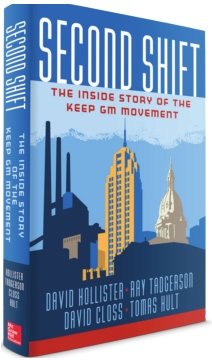
“During my middle school years I sold newspapers on the street. I would always start out at the locks,” Tadgerson said. “They were amazing.”
He went on to have a hand in building Cooley Law School Stadium and GM’s Grand River Assembly Plant, two mainstays in Lansing’s development. Tadgerson is a private man who only with prompting will mention the discrimination his and other Native American families faced while he was growing up in the 1950s.
“It wasn’t cool like it is now to be an Indian,” he said.
Tadgerson’s mother worked several jobs after his father died in an auto accident, and she saw to it that he could go to college.
“She had a tremendous work ethic and believed if you worked very hard, good things happen,” he said.
He attended Lake Superior State University and then Michigan State University, where he dropped out before returning and eventually earning a master’s degree in civil engineering. Following graduation, he began a 40-year career at Capital Consultants, now known as C2AE, an engineering firm in Lansing. He rose to CEO, a position he held for 20 years before retiring.
Tadgerson has a piece of paper taped to his computer with an acronym that drove his career: IYEWTBACEOYBFU.
“If you ever want to be a CEO, you better fire up,” Tadgerson explained.
In 1993, he read about the potential for a minor league baseball team in Lansing. He contacted then Mayor David Hollister with an offer of help. A stadium would be easy to build in an empty field, but Hollister wanted it downtown as a replacement for the “sin strip” on Michigan Avenue. There were several problems with the idea, but the biggest was fitting a regulation-sized stadium in a lot bounded by Michigan Avenue and Larch and Cedar streets. Tadgerson found a way to shoehorn it into the downtown location while still meeting Major League Baseball’s rigid requirements.
In 1996, Hollister was visited by GM lobbyist Edward Donovan. He brought good news and bad news. The good was that a new car, the Alero, would be launch in Lansing. The bad was that GM would shut down its Lansing Car Assembly operation in 2005, ending a 100-year presence in the community.
When word of GM’s exit leaked out, Tadgerson wrote Hollister about the successful campaign waged by Toledo to save its Jeep production facility. He suggested a visit to the mayor of Toledo to see how they pulled it off. That visit kicked off a multi-year campaign to keep GM in Lansing.
Tadgerson, along with Hollister and two MSU business professors, recently published “Second Shift,” a book on Lansing’s campaign to keep GM in the city. “Second Shift” tells how even though he was warned by GM officials and local business groups against waging a public battle to keep GM, Hollister, in his 1998 State of the City address, laid out a strategy to keep GM.
Twenty years later, we know that Lansing not only kept its GM plant but managed to add a second facility in Delta Township.
“Second Shift” is set to be unveiled locally at two upcoming events, a book signing at Schuler Books & Music’s Eastwood Towne Center location Wednesday and a community unveiling and fundraiser for the R.E. Olds Transportation Museum on Sept. 22 at the museum.
The book, Tadgerson said, tells about the important role that Hollister played, as well as of the courage of local officials. The book praises Arthur Baker and Chris “Tiny” Sherwood, local labor leaders, now deceased, who helped forge an unprecedented labor agreement.
One of the most important decision factors was that GM had to be convinced the plant could be built just off Main Street, at the former home of Oldsmobile, without disrupting manufacturing of the Alero. GM wanted the most modern plant in the world and estimated it would take 300 acres.
Tadgerson was able to secure a grainy rendering for a similar plant in South America from Jim Zubkus, GM Lansing’s general manager. Using that plan, Tadgerson came up with an alternative proposal that would enable the plant to be built at the Grand River site. Tadgerson’s plan and the success of the Alero launch turned the tide of the discussion.
In the book, published by McGraw-Hill, the authors use the experience to create a model that can be used by communities, businesses and educational systems facing disastrous outcomes.
“Lansing’s model and its success can be attributed to the right people being at the right place at the right time,” Tadgerson said. “Every community would have to adapt the plan to their own needs. It can’t be cookie cutter.”
“Second Shift”Author talk and book signing 7 p.m. Wednesday, Sept. 21 Guaranteed seating FREE with book purchase; standing room only tickets FREE without purchaseSchuler Books & Music (Eastwood Towne Center location) 2820 Towne Center Blvd., Lansing (517) 316-7495, schulerbooks.com
Book signing and museum fundraiser 5 p.m. Thursday, Sept. 22 $40/$60 couples (includes one copy of “Second Shift”) or $25 with pre-purchased book R.E. Olds Transportation Museum 240 Museum Drive, Lansing (517) 372-0529, reoldsmuseum.org
Support City Pulse - Donate Today!
Comments
No comments on this item Please log in to comment by clicking here